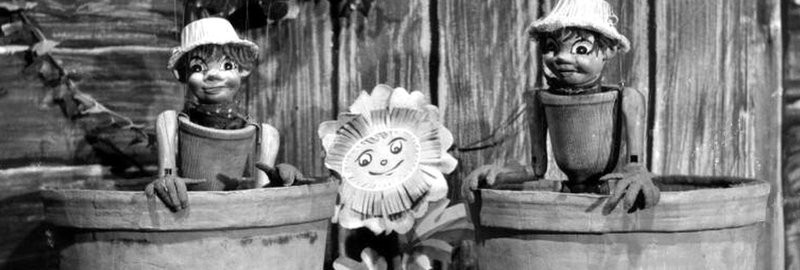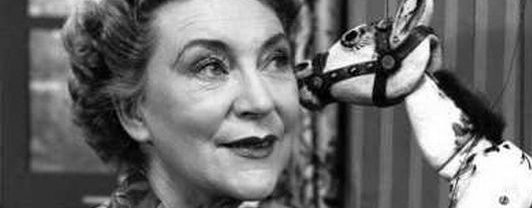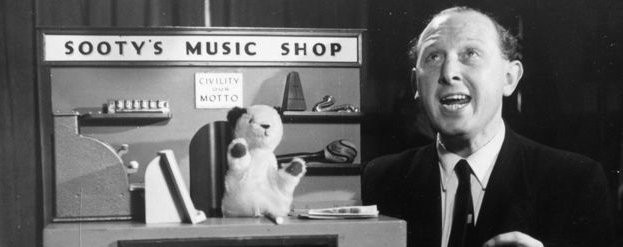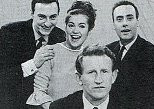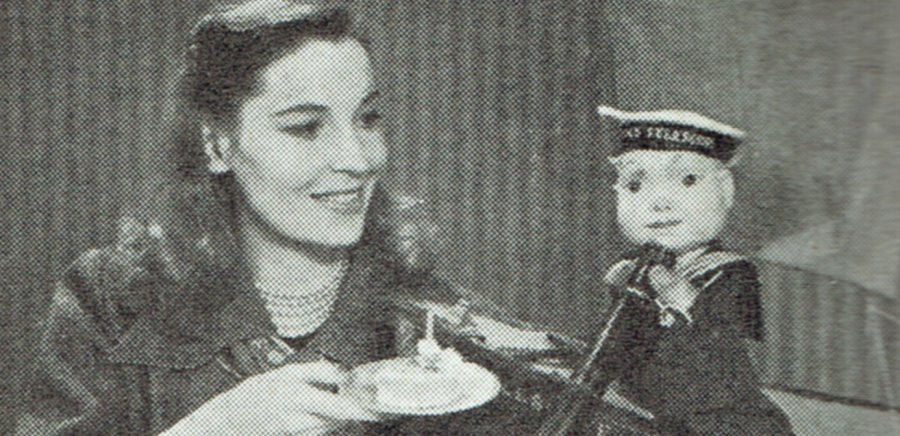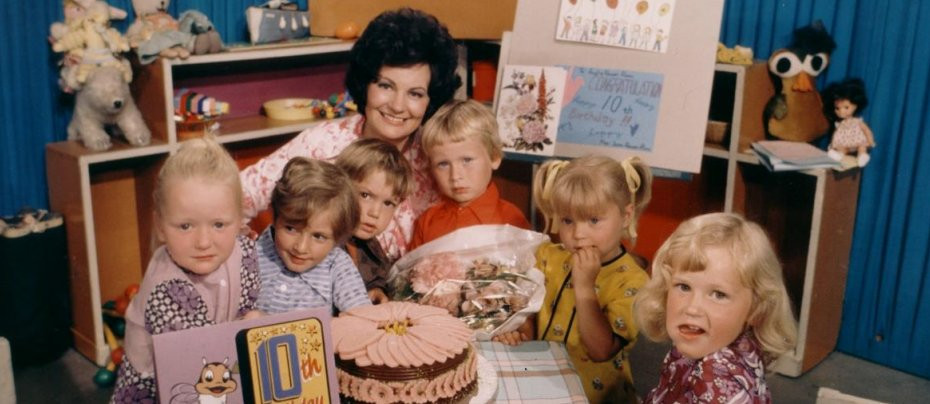
The Romper Room (UK)
1964 - United KingdomReview by Laurence Marcus
Children's programming has long been a cornerstone of television broadcasting, playing a crucial role in shaping the future of the medium. In the UK, from the early days of the BBC’s pioneering broadcasts to the diverse offerings of today's dedicated networks for youngsters, children’s TV has not only entertained generations but also served as a strategic tool for broadcasters to nurture loyal, long-term audiences. By engaging young viewers with imaginative shows, educational content, and memorable characters, broadcasters ensured that they could captivate the next generation of television consumers, instilling a sense of loyalty that would last a lifetime.
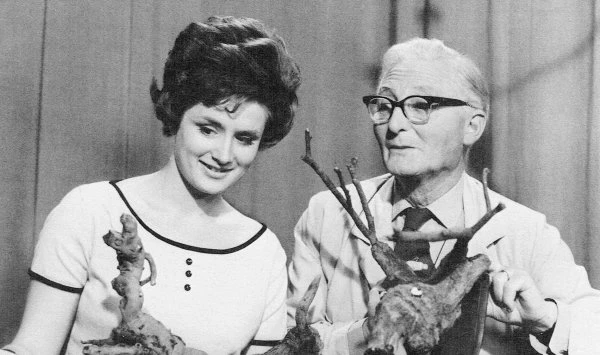
Anglia Television's debut children's series, Afternoon Club, launched in 1960 and was hosted by Valerie Oldfield. Airing five days a week, the show adopted a friendly, approachable tone, with regular presenters like Hugh Gee (affectionately known as Uncle Gee, because every children's TV or radio presenter in those days were either Uncle or Auntie) showcasing quirky segments such as animals made from plasticine or puppets made from conkers. Sandy Sandford captivated the young audience with stories, while John Seymour demonstrated how to make various DIY projects, such as garden swings and sledges (though the sight of 6-year old Janet or John heading outside armed with saws and hammers would probably cause many parents to have heart failure!). Additionally, Cavendish Morton, an art teacher, organized painting competitions, and the show ambitiously featured an international school quiz and offered filmed reports on children living in different parts of the world.
In 1963, the series developed into The Junior Angle (because it was from Anglia, right?) which added a junior news bulletin (hands up those who thought John Craven's Newsround was the first to do this) with the addition of music (hey, it was the dawn of the swinging sixties) and the very venerable Kingsley Amis was on hand to give tips on story writing.
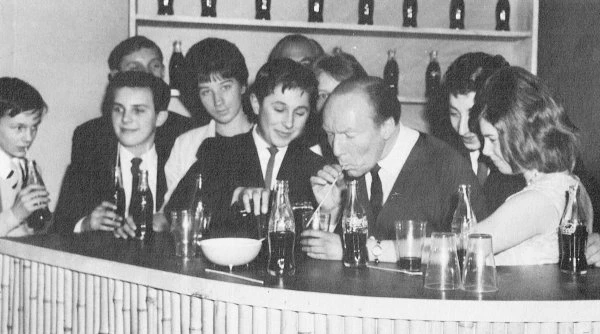
In 1964, The Romper Room began and quickly became a runaway success.
The Romper Room was a television show designed for young children, typically aged three to six, aimed at helping them adjust to group play and socialising with others. The concept and title originated in Baltimore in 1953, created by producer Bert Claster, with his wife Nancy, a former nursery schoolteacher, as the first host. The show's success was so significant that TV stations across America quickly sought permission to replicate it. The format soon spread internationally reaching as far afield as Hong Kong, Italy, Australia and Taiwan, but the Clasters insisted that all adaptations adhere to their original format. They also made sure to personally train every new "Miss Romper Room" host, ensuring consistency worldwide—proving they had a firm hold on the brand, much like modern tech giants!
When Anglia decided to adapt Romper Room for British audiences and advertised for a presenter there were forty applicants. Among them was a young Miss Esther Rantzen who made the final six before losing out to 26-year-old Rosalyn Thompson, a former children's nurse from Attlebridge, Norfolk. She went to Baltimore for a fortnight's training by the Clasters and returned to host the series as (breaking the tradition) 'Miss Rosalyn.'
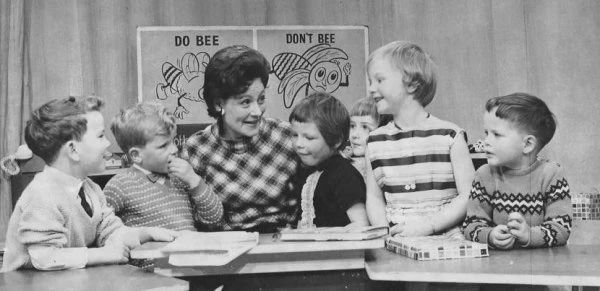
The Romper Room premiered in February 1964 and aired for 13 years, initially broadcasting twice a week at 5pm before shifting to a daily slot from 4:35 to 5. Each episode featured local children visiting Anglia's studios, where they played under the supervision of Miss Rosalyn. The children had the chance to run, jump, shout, paint, and hammer wood. With the help of two puppet characters, Mr. Do Bee and Mr. Don't Bee, Miss Rosalyn also taught them important lessons about hygiene, such as washing, brushing their teeth, and staying safe both at home and outside. Parents were also invited to send in details of their children’s birthdays or other notable events and Miss Rosalyn, staring straight into the camera, would call out their names and tell them she could see them through her ‘magic mirror.’
The programme was incredibly popular, with a waiting list of around a thousand children eager to appear (only six children could appear in each edition). In September 1965, The Romper Room celebrated its 200th episode, featuring children from regions as far as Lincolnshire, Essex, Northamptonshire, and Bedfordshire. The 500th episode, aired in 1966, was filmed at Hull’s City Hall in Yorkshire, marking the first time the show had been recorded outside its Norwich studio.
Miss Rosalyn, who was receiving around 200 letters a week, continued in her role for over 2000 editions, retiring in 1976 after marrying the programme's director. She handed over the reigns to Biddy Massen but the show only ran for another year. Miss Massen later appeared in the 1981 Anglia production Miss Morison's Ghosts starring Hannah Gordon and Wendy Hiller, but after that she seems to have disappeared permanently from our screens.
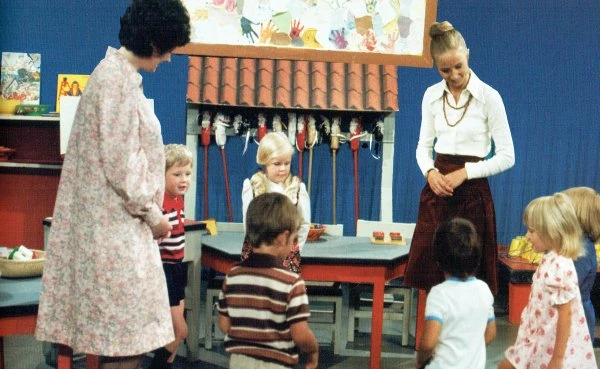
Grampian Television in northern Scotland produced a version presented by Miss Lesley (Blair) from 1963 and Ulster Television in Ireland created a local production, hosted by Miss Adrienne (McGuill).
Children's television programmes for the under-sixes in the 1960s and 1970s had a unique ability to capture young imaginations by offering a blend of playful, educational, and interactive content. Shows like The Romper Room and Afternoon Club provided not only a means of entertainment but also a sense of belonging, as children felt connected to the characters and their peers through shared experiences, even from the comfort of their homes. The magic of these shows lay in their ability to transport children into imaginative worlds where they could learn, explore, and grow—shaping a generation’s early relationship with television.
Seen this show? How do you rate it?
Seen this show? How do you rate it?
Published on November 26th, 2024. Written by Laurence Marcus for Television Heaven.


